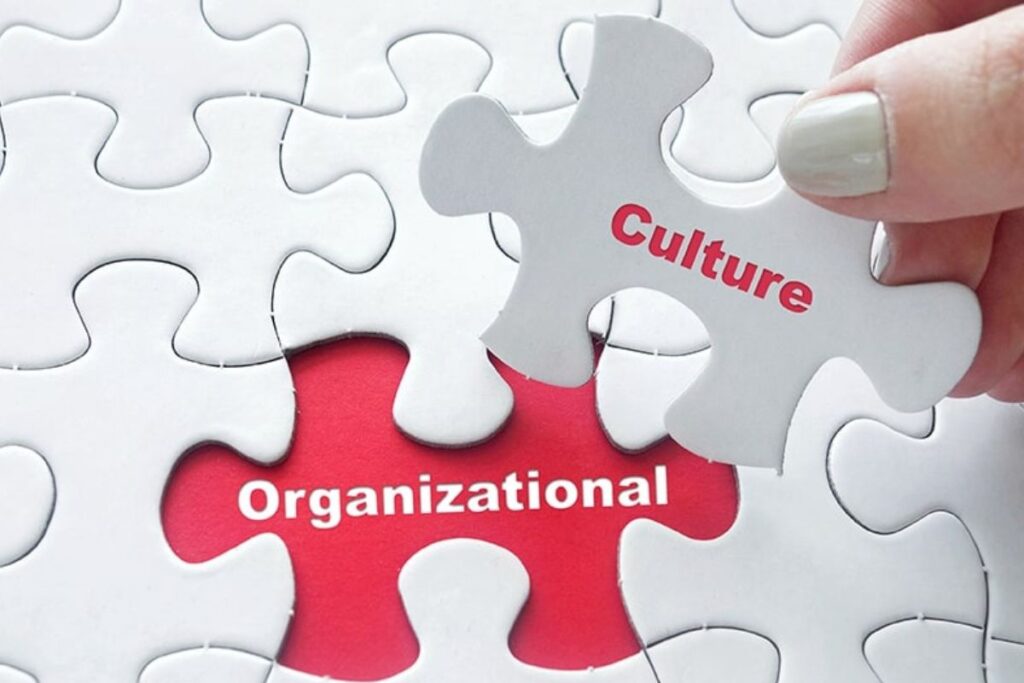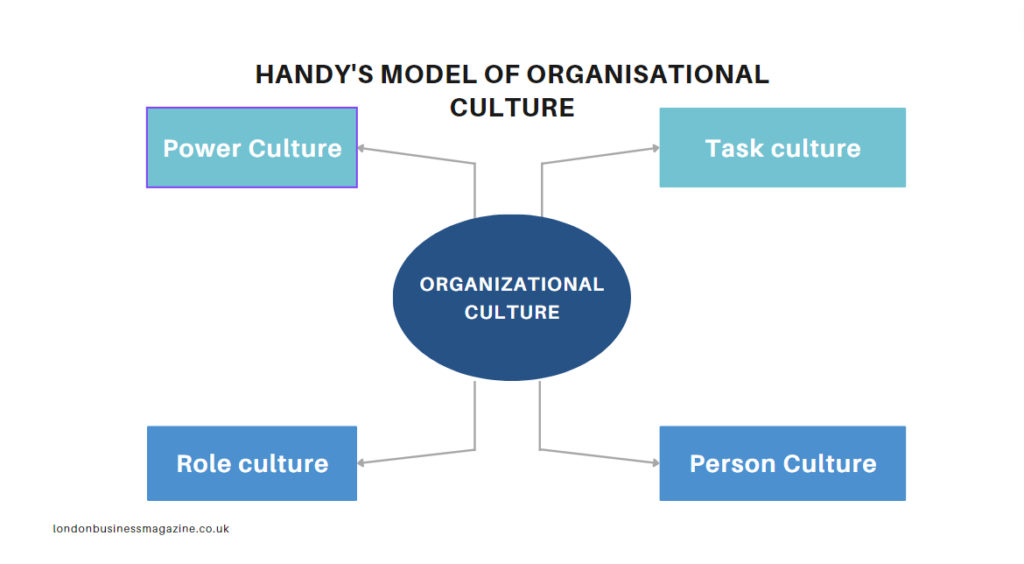Building or understanding an organization isn’t easy. There are many steps and handling required to run a company. Only by having an individual leader can many things go wrong. In all organizations, there is some sort of culture that exists. Believe it or not, it has a passive but great effect on the organization.
If the communication between the leaders and employees is good at the organization, then that’s an incredible thing. But sometimes, the existing culture in a company can make things complicated for the company. In such cases, it’s important to identify the culture available at the organization and work on it to improve the system.
So, the only thing that can make it easier to understand Organizational culture is through Handy’s Model Of Organisational Culture. It will help people understand their organization’s existing culture and its effect. So, proceed with the article to learn about a few interesting and useful things about organizational culture.
What is Organizational Culture?

Nowadays, business companies and organizations are becoming part of people’s lives. People either create a company or work for it, but in both ways, organizational cultures get involved. Organizational culture is a word for an environment or culture where the members or employees of the company share values, goals, working styles, norms, etc. When employees and company leaders follow and maintain this culture, it becomes an organizational culture.
Why is it important to have a work culture in an Organization?
In a workplace, having an organizational culture is very important. The leaders of a company mainly create the culture, which has a huge influence on the employees and the organization’s growth. So, the reasons organizational culture is important are,
- Improve Productivity: All the employees at the organization collaborate with the culture and, being a part of it, understand the values the company is trying to achieve and help the company reach them.
- Stable: having a proper structure or culture in a company makes the chances of chaos among the employees very low. A set of rules makes it easier for the employees to run the company.
- Communication: By understanding organizational culture, the employees won’t hesitate to promote their ideas in a team to improve the work. This communication will allow the company to develop innovations and have a healthy relationship among its members.
- Easy decision-making: organizational culture is a great method of avoiding conflicts. Because of this, the major members of the company will always prioritize what is good for the company and then, based on that, will make a mutual decision.
- Flexibility: it will also encourage the organization and employees to accept and be flexible enough to adapt to the new changes. This way, the company can deal with new challenges while having the support and expertise required from its members.
How is Charles Handy’s model related to Organizational Culture?
We all know that in a work field, whether it’s a small organization or multinational organization, all of it has some sort of work culture, and with the help of Charles Handy’s model, also known as the ‘Four Culture’ model, people can determine what organization culture is part of the company or the people from the company are following. So here is the organizational culture model by Charles Handy.

Power Culture
The power culture is the first organizational culture mentioned in Handy’s model of culture. This organizational culture can be identified when an individual or a small group holds the company’s decision-making power. We can compare the power culture with the spider in a spider web or the queen bee in a beehive, where the power spreads out from the center of the important individual.
The decision-making power of an individual or a small group greatly influences the company. This culture allows the company to make quick decisions, which is very important in a competitive market where every second is precious.
Task culture
Task culture can be seen when the organization follows group work. In this method, based on an employee’s expertise, skills, and experience, they are allotted to a temporary group where other team members have more or less the same level of skills.
This cultural method for the work team is temporary, and once the project or service is done, the team is dis-branded. Sometimes, it can be an issue, but it allows companies to be flexible and produce creative and innovative solutions based on the work requirements. Not only that, but it also allows the employees to improve their work and gain more work experience.
Role culture
In Charles’s handy organizational culture, role culture is mentioned as directly related to the government company or huge organizations. When a company follows a hierarchy system, the role culture naturally becomes a part of it.
These organizations mainly have a fixed business running method, which makes the company stable and has a clear structure for running it. In such organizations, the profit can be slow, but there is no risk of losses and unexpected or sudden deviations. So if the organization constantly maintains the small required changes and understands how to maintain the Role culture, then it’s a great business model.
Person Culture
The Person culture is when, in a company or organization, the role of an individual is huge, and the company has to work to serve and fulfill their needs. In the company, the person has goals and frameworks to fulfill. They are not committed to the organization.
From Handy’s model, this work culture mainly works for people who own company shares or equity, and from the growth of the company, they will get their profit. Besides that, people who work in a law firm or are doctors in the medical field can be part of the person’s culture.
How does Charles Handy’s model help the Businesses or the Organisations?
Charles Handy’s model can help a business or a company in a great way. To run a company, employees are really important, and when there are employees, naturally, there would be a work culture as well.
Different organizations have their cultural methods, but to make the company bigger and better, sometimes it becomes necessary to change the organization and culture.
And sometimes, the existing culture is the perfect choice for the company, but it requires some development. But in any case, an organization can’t exist without organizational culture.
So, based on the culture available at the company, there are many things that people can consider, develop, or change for the company’s well-being. So,
Issues about Power Culture
Power culture is great for small businesses where the owner makes all the decisions for the company. But once the company started to grow, there were many other elements of services, and most importantly, the number of employees started to increase.
At that time, following an individual’s decision can be problematic. People should understand that only the CEO can’t make all the decisions for the company as it’s a huge responsibility; this way, the company doesn’t have much scope to grow.
So, to solve the issue, it’s better to change the organization’s culture. And if the company’s founder wants to maintain the power culture, it would be better to hire other members who are eligible and skilled enough.
This way, besides the CEO, the company will have a COO, CFO, CMO, vice president, HR Head, and other posts based on the company’s requirements.
As a result, at the time of decision-making, there would be a whole board of skilled and experienced people who are eligible enough to help the company make the best decision for the company and the employees.
This way, the employee’s opinion will be valued, and the responsibilities or pressure won’t be totally on the owner. And based on the expertise of the board members, the problems can be easily solved.
Required development in Task Culture
The task culture in the handy cultural model is an instrumental working style. This culture is very important for big companies as it helps them grow. However, many developments are required to strengthen the task culture in a company event.
A big organization has different departments, and if it’s a service or research company, it has even more departments.
Now, for important projects, the head of the department should always allocate experience and a skilled group of people. This way, the group can produce the most positive result with equal effort.
For employees with less experience or skills, instead of putting them on a high-level project, it’s better to train them with private step-by-step guidance to help them learn and keep up with other employees. Also, this way, the workflow won’t be disturbed.
The head of the department should encourage communication among the employees at the project meetings, group discussions, etc.
This way, the employees can give their insight and discuss how their expertise can benefit the company if the constant change of formation in a team is causing problems or other things.
Things to understand about Role culture
As Handy’s model of culture is mainly followed by huge organizations in companies, that’s why there is not much that the employees can do to change.
Government or huge multinational companies have their own method of running the system. And if you want your opinion to be valued, you have to be at the top of the hierarchy system, which isn’t fair.
In an Organisation, to maintain stability, that is a set of useful rules that all the employees must form. But it’s better to describe to the employees why these rules are important.
These huge organizations run a business based on stability, so they don’t open themselves up to innovative changes. Because of this, even in the evolving market, the employees and the customers are stuck with slow services.
And even though the organization decides to change something about their business, the decision-making process is so slow that it takes ages for a single change.
Conflicts in the Person’s Culture
If a person’s culture is a part of a company, then those individuals will think that they are the ones who should make the decision or they know better than others. This way, there would be a conflict between those individuals, affecting the company and its employees.
Not only that, but in such cases, individual members prefer their success over the organization. If unsatisfied with it, sooner or later, they will leave the organization, putting it at significant risk as the company depends on that individual.
Suppose a company has no proper management setup and is mostly done by individual creativity. In that case, there is no doubt that there will be a low to non-existent collaboration performance, because of which there won’t be any innovation.
Having a personal culture in a company is good. Still, the company should also have a decision-making and discussion unit that will help share knowledge and ideas, which will be a huge part of the company’s growth.
Conclusion
Organizational culture is a very important part of a company, and even though it may not look essential most of the time, the culture is created automatically. If it’s not controlled or handled properly, then the environment of the organization can get chaotic.
A positive organizational culture environment will help the company flourish and encourage the company members to try innovative work methods. Not only that, the positive influence of the company leaders will allow the employees to improve their work and face new challenges.
All this understanding about the organization and culture is possible because of Charles’s handy organizational culture model. So, now it will be easier for you to understand your company’s culture and its flaws; therefore, as a prominent member of your company, you can work on it and improve the system for the company and the employees.







